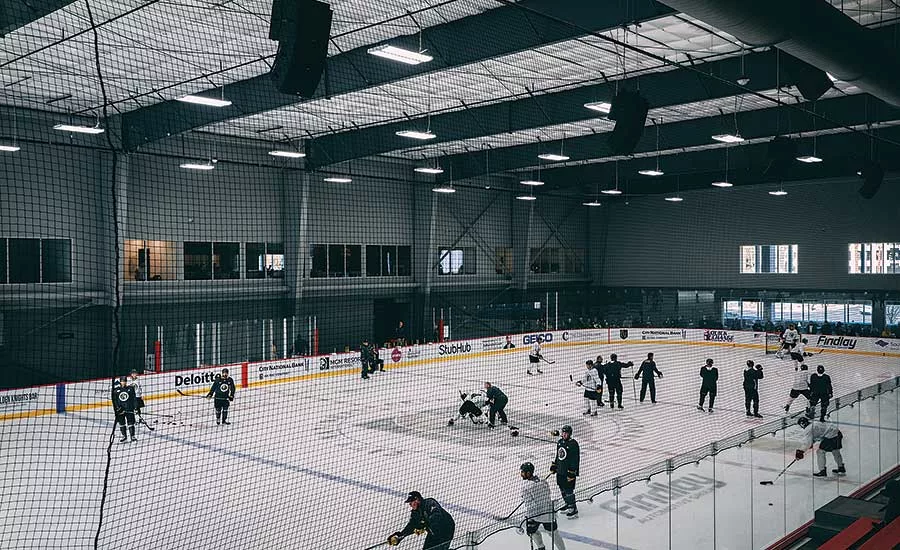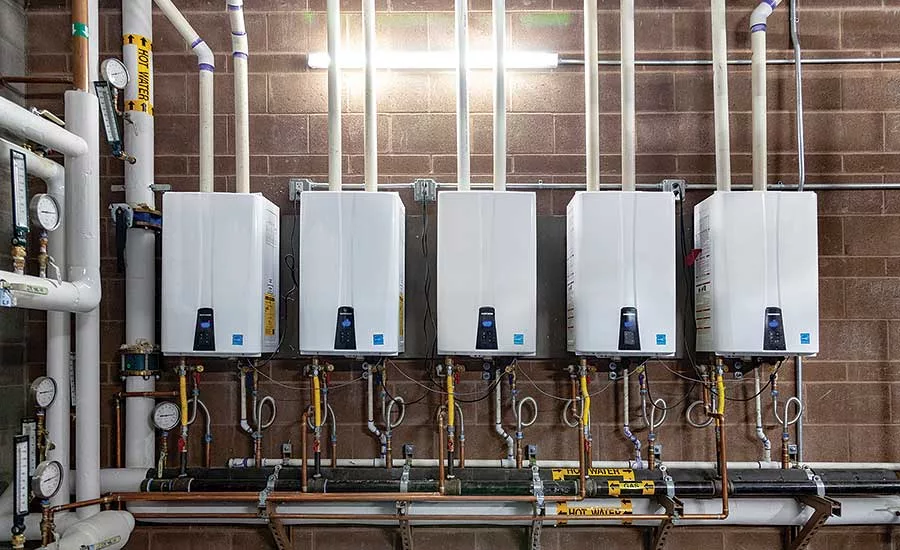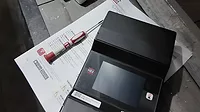NHL facility scores innovative hot-water system
The two-rink, 146,000-square-foot City National Arena is home to the Vegas Golden Knights.

The 146,000 square-foot City National Arena just outside Las Vegas features two ice rinks, a pro shop and a bar and grill.

While the arena’s water-to-water heat-recovery equipment supplies preheated water for the building’s domestic hot water, the superheater only brings water up to a certain temperature, so designers specified a Navien NPE-240S tankless water-heater system to finish the task.

Las Vegas’ City National Arena held its grand opening in September 2017.
In the world of professional sports, few, if any, cities have seen as much change and exciting promise in the past 12 months as Las Vegas. Not only is the Oakland Raiders NFL team now approved to relocate to the Entertainment Capital of the World, but the newest NHL team started playing in Las Vegas last year.
By drafting players from the league’s 30 other teams, the Vegas Golden Knights became the first NHL expansion team since 2000, and the first major pro sports franchise to be based in Las Vegas. And they’ve made the city proud.
The Golden Knights started their inaugural season by winning their first eight of nine games. They also became the second NHL expansion team to reach the Stanley Cup finals in its first season, joining the 1967-1968 St. Louis Blues.
But teams aren’t necessarily forged on game day. It’s the many exhaustive hours of practice that bonds players together, and this is especially true for startup teams. Athletes who’ve never played together only form a cohesive unit through repeated exercise.
FIT FOR A KNIGHT
In late 2016, months before the draft even took place, ground broke on the new Vegas Golden Knights practice facility and headquarters. City National Arena is a 146,000 square-foot, two-rink arena in the Summerlin area, on the western side of Las Vegas.
In addition to housing both University of Las Vegas hockey and the Vegas Jesters minor-league hockey team, the arena is open to public use. Hockey camps, figure-skating clubs and ice-skating trainers make use of the state-of-the-art facility. There’s a pro shop for visitors and skaters alike, and upstairs, the MacKenzie River Pizza, Grill and Pub is a great place to grab a drink and observe both rinks below.
“There are few facilities that have a need for hot water as large and varied as an ice rink,” says Christian Glowinski, director of operations at City National Arena. “For example, we have a Zamboni station where ice that is shaved from the skating surface needs to be melted, and the Zambonis themselves must be filled with hot water, which is applied to the rinks to keep the ice as smooth as glass.”
As a result, City National Arena’s unseen domestic hot-water production system is just as impressive as the facility’s amenities. Maintaining two sheets of ice in a southern Nevada climate is no small task, but there is also a lot of heat to remove from the ice itself — and from the building.
Luckily, a restaurant, 10 locker rooms with showers and the Zamboni station call for high quantities of domestic hot water. Why is that lucky? Because that need for hot water was ultimately turned into a heat sink for the building’s giant cooling load.
This was accomplished during the arena’s design phase by finding a system that creates a symbiosis between the need to reject heat and the need to create it.
SYMBIOSIS
In May of 2016, Arnie Martinez, vice president and director of architecture for the project’s architectural firm, Leo A. Daly, hired Finnegan Erickson Associates (FEA) for the mechanical system design. The Las Vegas MEP firm was founded in 1998 and focuses on hospitality projects, though a variety of projects from small retail to sporting arenas fill its extensive portfolio. The design formulated by Senior Plumbing Designer Pedro Quiroz and Robert Finnegan called for a plant package made for arenas.
“The plant package, also called a superheater, is an assembly of water-to-water heat-recovery equipment that rejects heat from the building into a large storage tank, which supplies preheated water for the domestic hot water [DHW] system,” Quiroz says. “But the superheater only brings water up to a certain temperature, typically not high enough for domestic use. So a robust tankless water heater system was specified to finish the task.”
The superheater unit is located in the same mechanical room as the system’s other components — the wall-hung tankless water heaters and the large storage tank. The superheater provides water at a range of 90-110° F to the buffer tank. The facility then relies on the cascading tankless water heating system to bring storage tank water up to 120° at 23 gpm.
The water heaters used for the project are rated at 99% thermal efficiency and designed specifically with commercial applications in mind, and as many as eight units can be common-vented. When multiple units are installed as a cascading system, the units not only provide redundancy, but give the system a widely varying firing rate. This lowers fuel consumption and reduces runtime on all of the units.
Because the upstairs bar and restaurant requires 140°, a separate tankless system was installed. The upstairs system includes three units and is completely isolated from the superheater and downstairs hot water system.
SPECIFY, INSTALL, COMMISSION
“We specified Navien units for this project because we’ve had no issues with them in the past, and they’re very flexible, which is a must for the wide variety of hospitality projects we’re involved with,” Quiroz says. “The first experience I had with these tankless water heaters was standing in a room full of 24 units; I thought they were off, when in fact all of them were running. Even in large systems, they’re very quiet.”
During the design phase, Quiroz relied on Navien Western Regional Sales Manager Roger Poland for help with the tankless portion of the design. The engineering firm supplied Bombard Mechanical with meticulous diagrams for the installation.
“Roger provided tremendous support before, during and after the installation,” Quiroz says. “It’s not often that both the engineer and the contractor receive that level of support from a manufacturer.”
Bombard technicians hung the five tankless units on one wall, piped in parallel. They called Poland if a question arose, but the units were one of the simpler elements in the system. The equipment was operational weeks before the arena’s grand opening.
“We’ve had no problems whatsoever with the domestic hot water system,” Glowinski says. “I oversee all mechanical operations here, and this is one element that I don’t need to pay any mind.”
Bombard Mechanical finished the mechanical room ahead of schedule. In fact, construction of the entire facility stunned a few skeptics who thought City National Arena couldn’t possibly be completed in time for the 2017 hockey season. A grand opening was held on Sept. 18, 2017.
Las Vegans now have an NHL team they can be truly proud of, and — unbeknownst to most of them — its carbon footprint is smaller than it would seem, thanks to an innovative domestic hot-water system.
Looking for a reprint of this article?
From high-res PDFs to custom plaques, order your copy today!







